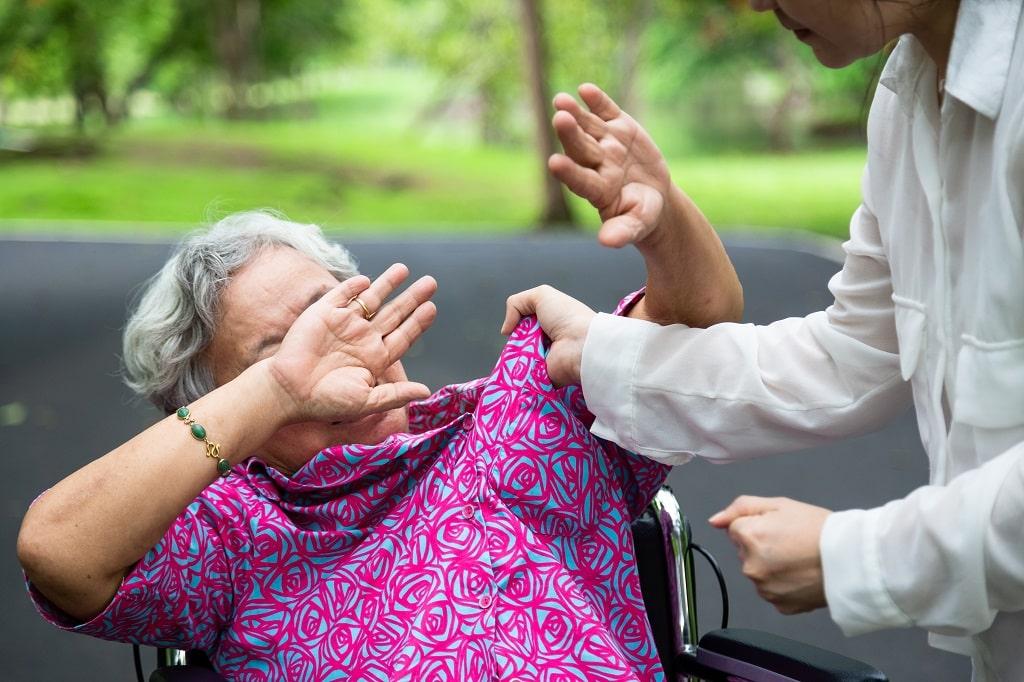As our loved ones age, many of us find ourselves stepping into the role of caregivers, a position filled with both profound responsibility and deep emotional connection. While the goal is to provide comfort, support, and dignity during this phase of life, caregivers must also remain vigilant against the darker side of aging—elder abuse. This insidious issue can manifest in various forms, including physical, emotional, financial, and neglect, often hiding in plain sight behind closed doors. In this article, we will explore how caregivers can recognize the signs of elder abuse, understand its different forms, and implement practical prevention strategies. By equipping ourselves with the right knowledge and tools, we can create a safer, more nurturing environment for our elderly loved ones, ensuring that their golden years are truly golden. Join us as we delve into crucial tips for safeguarding our seniors and fostering a culture of respect and compassion.
Understanding the Signs of Elder Abuse and Neglect
Recognizing the subtle yet alarming signs of elder abuse and neglect is crucial for ensuring the well-being of older adults. Emotional abuse may manifest as withdrawal, fearfulness, or sudden changes in behavior, often indicated by avoiding eye contact or showing unusual levels of anxiety. Physical abuse can be identified through unexplained bruises, scars, or frequent hospital visits. It is essential to remain vigilant for signs of neglect, which can include poor hygiene, unexplained weight loss, or untreated medical conditions. Caregivers should develop a keen awareness of any drastic changes in an elder’s demeanor or physical state that may suggest mistreatment.
Furthermore, establishing open lines of communication is critical. Encourage the elderly individuals in your care to express their feelings and concerns freely. Signs of financial exploitation can be just as damaging, often indicated by sudden changes in financial circumstances or unusual bank withdrawals. If you suspect any form of elder abuse, it is crucial to take immediate action. Use the table below to help identify and differentiate various signs of abuse:
| Type of Abuse | Possible Signs |
|---|---|
| Physical Abuse | Bruises, fractures, signs of restraint |
| Emotional Abuse | Fear, anxiety, sudden withdrawal |
| Neglect | Poor hygiene, malnourishment, filthy living conditions |
| Financial Exploitation | Unusual bank activity, missing possessions |
Empowering Caregivers with Effective Communication Strategies
Effective communication is a vital skill for caregivers, significantly influencing the well-being of both the caregivers and those they care for. Establishing an open dialogue can help in identifying signs of elder abuse early. Active listening allows caregivers to better understand the emotional and physical needs of their loved ones, fostering a sense of trust and security. Here are some strategies to enhance communication:
- Engage in regular check-ins to encourage expressions of feelings and concerns.
- Utilize non-verbal cues, such as eye contact and body language, to convey empathy.
- Ask open-ended questions to facilitate deeper conversations.
- Validate their feelings and encourage them to share their experiences without judgment.
Moreover, creating a safe environment for dialogue is crucial. Caregivers should be well-versed in the signs of elder abuse, enabling them to initiate tough conversations if necessary. Developing strong rapport can help in making individuals comfortable sharing their experiences. Documentation also serves an essential role in communication; caregivers should maintain accurate records of their observations and interactions, which may be useful if concerns arise. Below is a simple table outlining key signs of elder abuse that caregivers should watch for:
| Type of Abuse | Signs to Observe |
|---|---|
| Physical Abuse | Unexplained injuries, bruises, or fractures. |
| Emotional Abuse | Withdrawal, sudden changes in behavior, or fearfulness. |
| Neglect | Poor hygiene, unsafe living conditions, or malnutrition. |
| Financial Abuse | Unexplained withdrawals or changes in financial status. |
Implementing Proactive Measures to Foster a Safe Environment
Creating a safe environment for elderly individuals begins with awareness and education. Caregivers should engage in regular training sessions to stay updated on the latest techniques and methods for identifying signs of abuse, both physical and emotional. Ensuring open communication fosters a trustworthy relationship where elders feel comfortable voicing concerns. Here are some proactive measures caregivers can implement:
- Conduct routine assessments to monitor the elder’s physical and emotional well-being.
- Maintain transparent communication with family members and healthcare professionals.
- Establish a support network of trusted friends and family to discuss any red flags.
- Encourage participation in social activities to reduce feelings of isolation.
Documenting any changes in behavior or physical condition can also be a key aspect of prevention. Creating a simple tracking system can help caregivers and families identify patterns that may indicate abuse. Use the following table to log observations:
| Date | Observation | Follow-Up Actions |
|---|---|---|
| MM/DD/YYYY | Example: Unexplained bruising | Example: Discussed with healthcare provider |
| MM/DD/YYYY | Example: Withdrawal from social activities | Example: Organized a visit with friends |
Implementing these proactive strategies increases the likelihood of recognizing and addressing potential abuse before it escalates, ensuring a nurturing and safe environment for the elderly in our care.
Resources and Support for Caregivers Facing Elder Abuse Challenges
For caregivers navigating the complex landscape of elder abuse, access to resources and support is vital. Embracing a proactive approach can often equip caregivers with the necessary tools and information to effectively combat potential abuse. Consider reaching out to local or national organizations dedicated to elder care. These groups often provide invaluable services, including training programs, legal advice, and emotional support for caregivers. Some notable resources include:
- National Center on Elder Abuse (NCEA): This organization offers comprehensive information on identifying and preventing elder abuse.
- Adult Protective Services (APS): A state-level service that investigates reports of elder abuse and provides protective services.
- Alzheimer’s Association: They provide support groups and information specific to caregivers of those with dementia.
Additionally, engaging in community efforts can provide a network of support and shared experiences among caregivers. Consider joining caregiver support groups, either in-person or online, where you can connect with others in similar situations. Here’s a simple table listing a few resources that can assist caregivers:
| Resource | What They Offer | Contact Information |
|---|---|---|
| Local Aging Agency | Information and referrals for elder services | Visit your local website |
| National Domestic Violence Hotline | Support for those facing elder abuse | 1-800-799-SAFE |
| National Caregiver Support Line | Confidential support for caregivers | 1-800-422-1193 |
To Conclude
recognizing elder abuse is not just a responsibility—it’s a commitment to enhancing the quality of life for our elderly loved ones. As caregivers, being informed and vigilant is crucial in preventing abuse and ensuring safety and dignity for those we care for. By understanding the signs of abuse, fostering open communication, and implementing preventative measures, we can create a supportive environment where elders feel respected and valued.
Remember, if you ever suspect elder abuse, it’s important to take action. Reach out to local resources, authorities, or support networks to address any concerns. Together, we can build a stronger, more compassionate community that honors and protects our elders.
Thank you for taking the time to educate yourself on this vital issue. Stay proactive, stay informed, and let’s work together to make a difference. Continue following our blog for more insights and resources on caregiving and elder care. Your efforts matter, and together, we can ensure that every elder lives with dignity and respect.






